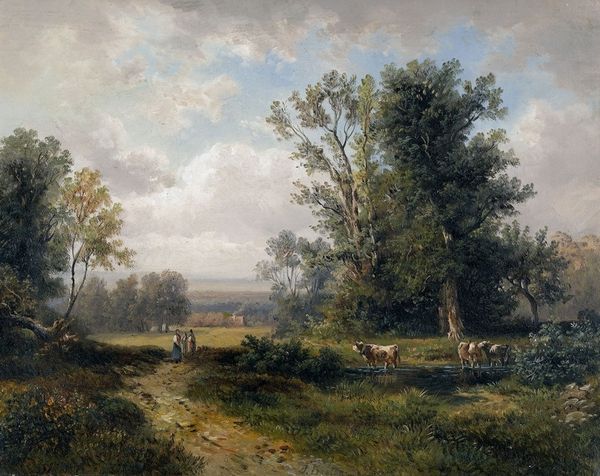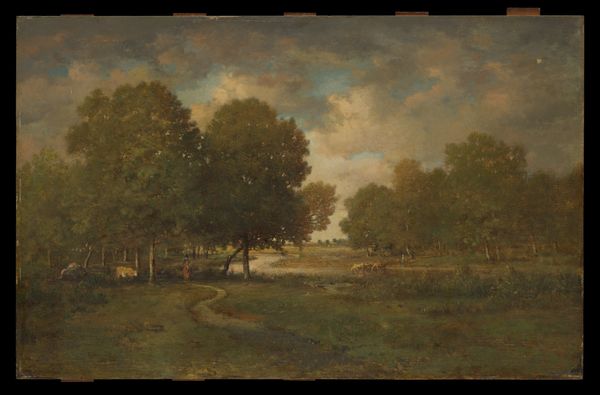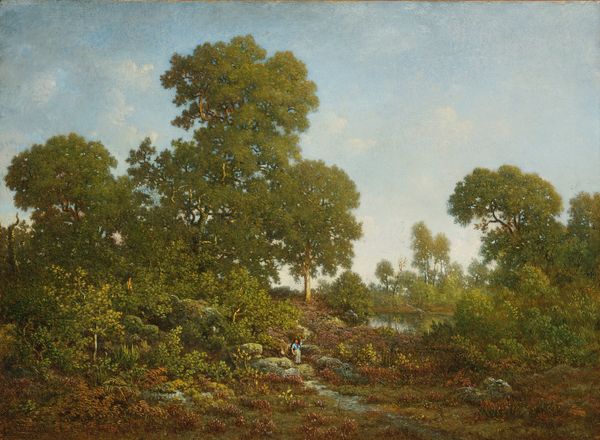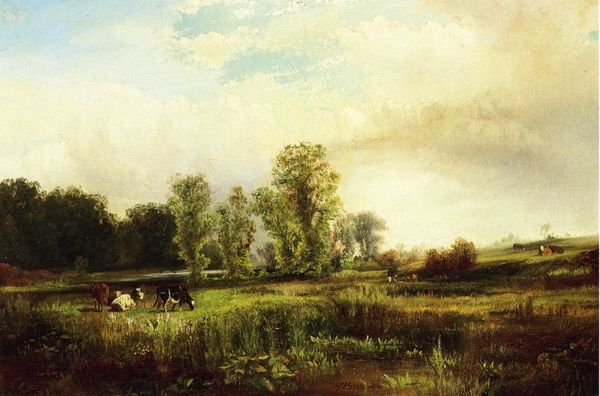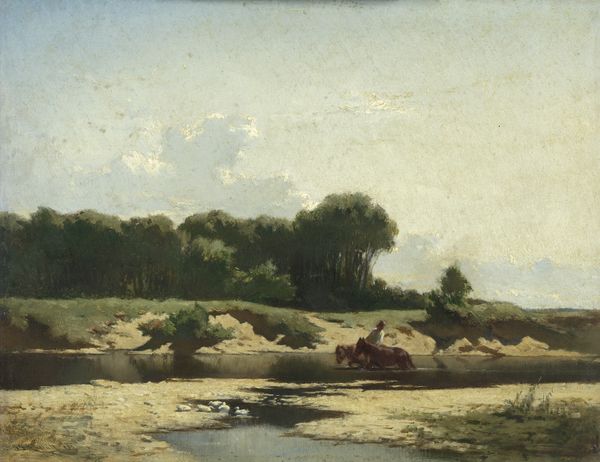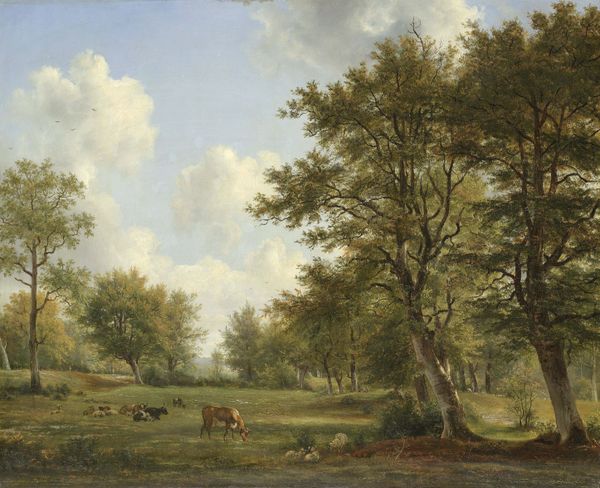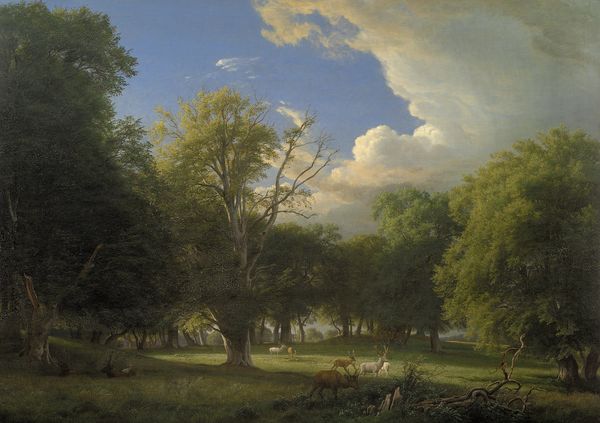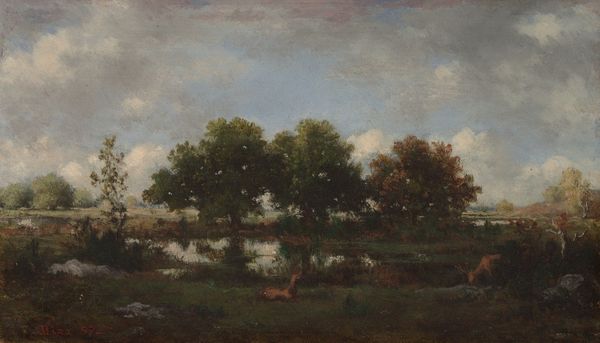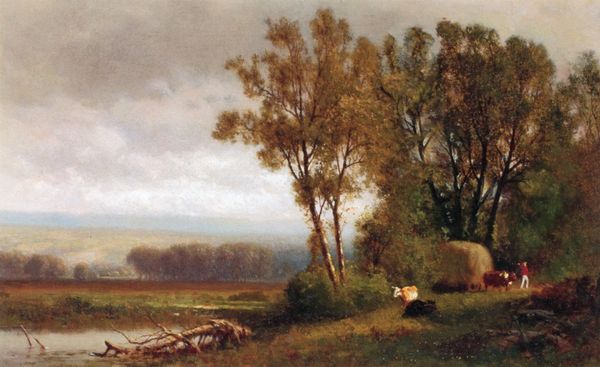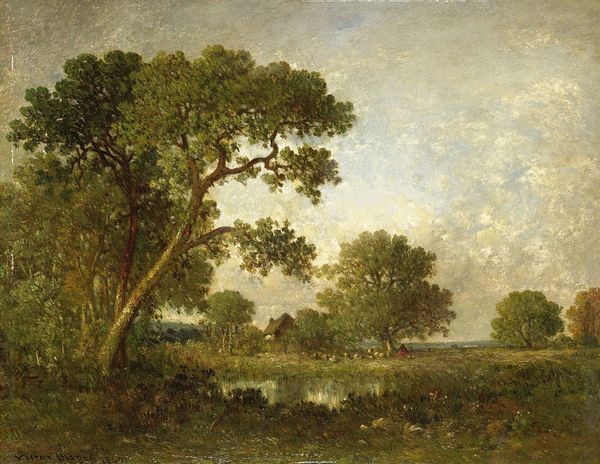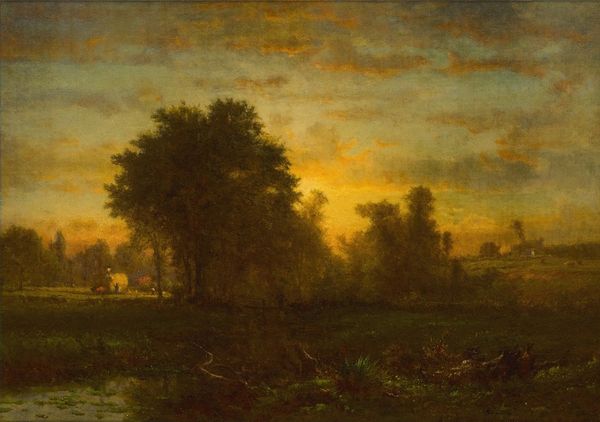
Dimensions: 23 x 37 in. (58.4 x 94 cm)
Copyright: Public Domain
Curator: Immediately, I'm struck by the peaceful quiet of this place; there's such a stillness held in the air, and its heavy clouds evoke a melancholic feel. Editor: Let me introduce you to "On the Unadilla, New York," painted in 1884 by David Johnson, rendered in oil paint. Notice how it represents an interesting juncture in the art world: the tail end of the Hudson River School meeting the rise of early realist practices. Curator: Indeed. The path itself pulls me in, so meticulously placed; notice the cattle, perhaps local labor in an agrarian setting. There's almost a romanticized quality given to the working class here. Editor: The cow as a symbol, of course, runs deep. Historically, cows embody ideas of pastoral abundance and maternal care in a pre-industrial, utopian arcadia, which aligns with the philosophies behind the Hudson River school. I wonder if Johnson included these bovines to create a visual metaphor for American promise? Curator: Quite possibly, but I can't ignore how the very act of painting "en plein air" was also becoming increasingly common; capturing this on canvas reflects shifts in leisure and working habits around this time. Also, observe the physical handling of paint! It seems more loose than earlier Hudson River school examples, pointing towards experimentation, perhaps owing to the availability of pre-mixed paints. Editor: It's as if the artist wants to record not just a likeness of the location, but also how one felt when actually within it. The lone figure stands erect as an everyman or everywoman; he's positioned almost center frame between a trail and a tree. Could he represent someone's literal journey into this promising space? Is it America as a new Eden, pre-industrial, ready for the common man to prosper? Curator: Perhaps, but also consider the industrial materials and methods of making this: paint from tubes rather than painstakingly made, canvas prepared for easier use. Editor: To conclude, Johnson masterfully utilizes potent symbolic language, intertwining his scene with themes of land, promise, and nation-building, all firmly set within our visual memory. Curator: By appreciating it not just for the subject depicted but for the context of its making, we’re offered a much richer story about art, labor and culture at the end of the 19th century.
Comments
No comments
Be the first to comment and join the conversation on the ultimate creative platform.
